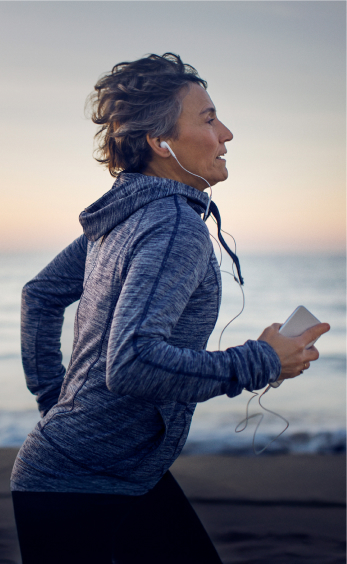Gardening: It’s not a contact sport. Yet it can be surprisingly hard on the body, especially in terms of producing short-lived low back pain. I consulted two medical professionals—Dr. Rajive Adlaka and physical therapist Jeffrey Mannheimer, who both have many years of experience in managing pain—for their gardening tips.
Dr. Adlaka vividly describes the potential hazards. “Gardening involves a lot of bending,” he says, “and can lead to awkward positions.” Reaching, as when pruning a bush, can strain your back. Using tools, like a shovel, adds a whole new dimension to physical exertion. Moving heavy objects—like 10- to 50-pound bags of peat moss—offers unique challenges. “These are dead weight, bulky, unruly,” Dr. Adlaka says. “The weight can shift, and then you flinch and grab at it.”
Physical therapist Mannheimer emphasizes the stress on the back produced by prolonged flexion of the spine—that is, bending forward, thus reversing the spine’s natural curvature and straining the ligaments, muscles, and even the discs that separate the vertebrae.
Before Gardening Back Stretches
These can also be done during or after gardening. Any exercise or back stretch should be done slowly and without strain; never force yourself into a position. If you feel pain, stop.
1. Dr. Adlaka recommends two warm-up exercises, both done lying on your back on the floor or on a bed. In the first, pull your knees, together, to your chest. Keep your ankles together, and lower both knees gently to one side, touching the floor if possible, then the other. This massages the muscles on either side of the spine and gently moves the joints in the lower back.
2. Dr. Adlaka’s variation on this exercise is to lie on your back, knees to chest, and gently move each knee toward the shoulder on the same side, then toward the opposite shoulder. Repeat for each knee.
3. Mannheimer suggests the “seventh-inning stretch” to warm up: do three to six back bends, slowly, with no discomfort. This extends the spine, which is the opposite of forward bending (or flexion). You can place your palms near the base of the spine to ensure that you’re not bending back too far.
During Gardening / Tips on Body Dynamics
Mannheimer had some suggestions for how—and how much—to garden to avoid pain. (About.com has a number of slideshows illustrating the best way to perform certain gardening tasks.)
4. Do not garden for longer than 20-30 minutes at a time.
5. Every five minutes or so, stand up and perform the easy back bends from the waist described in 3) above.
6. Avoid standing and bending forward from the waist. If you need to be near the ground, as for weeding, set both knees on a pad, support yourself with one hand, keeping the neck in a normal position and the back as straight as possible, and use the other hand for gardening. Switch hands periodically.
7. If you’re lifting a heavy object—a box of plants or soil, say—you should squat (bend the knees only), keeping your back straight, and grasp the object with both hands (handles work well). Make sure you’re lifting close to your body as you straighten your knees. You can also put one knee down and bend the other in order to avoid bending forward. If you need to put the object down nearby, pivot your whole body, including hips and legs. Twisting only the upper body, especially while forward bending, causes the most torque, and thus pressure, on the lumbar discs.
8. If back pain progresses to aching, tingling, or numbness in the buttocks or legs, stop gardening immediately. These can be signs of too much pressure on one or more of the lumbar discs, which may cause sciatic pain.
After Gardening / Back Pain Remedies
Despite your efforts and best intentions, you may end up with some low back pain. Dr. Adlaka suggests various methods to alleviate acute pain—that is, pain that resolves on its own after four weeks or so.
9. Visits to a physical therapist or chiropractor wouldn’t be necessary in the first four weeks, but would do no harm. Acupuncture is still not a mainstream therapy, though some data show it’s effective for long-term low back pain.
10. Hot or cold compresses can alleviate pain. Either is fine, though cold is preferred—at least initially—if there’s swelling. Otherwise, the choice boils down to patient preference.
11. Over-the-counter medications, like ibuprofen and paracetamol (Tylenol) can help, though Dr. Adlaka says these are associated with a few risks. Taking more than the recommended dosage (some people double up on non-steroidal anti-inflammatory drugs, or NSAIDs, with different brand names) can cause GI upset and bleeding and even increase the risk of heart attack and stroke.
12. Electrotherapy, which Dr. Adlaka notes is “noninvasive and low-risk,” is a great non-drug alternative with no side effects. Transcutaneous electrical nerve stimulation (TENS) pain relief is now affordable and readily available without a prescription.
